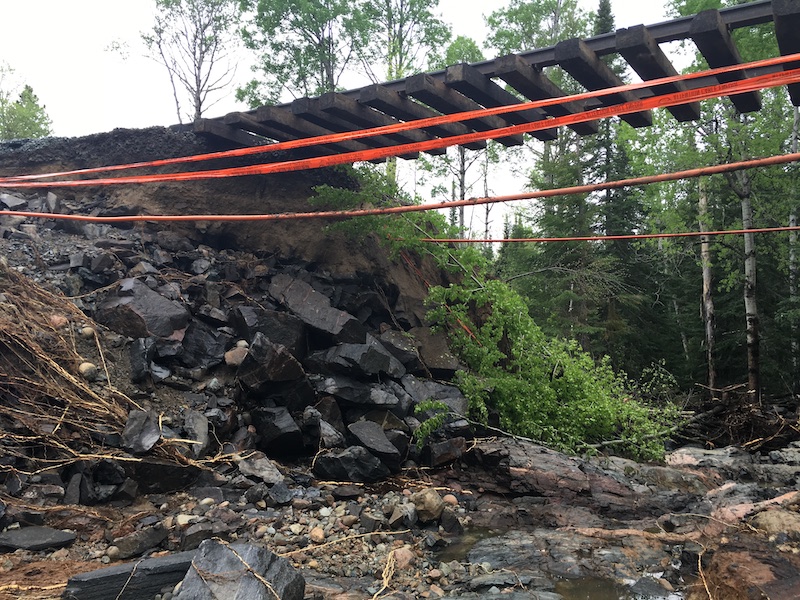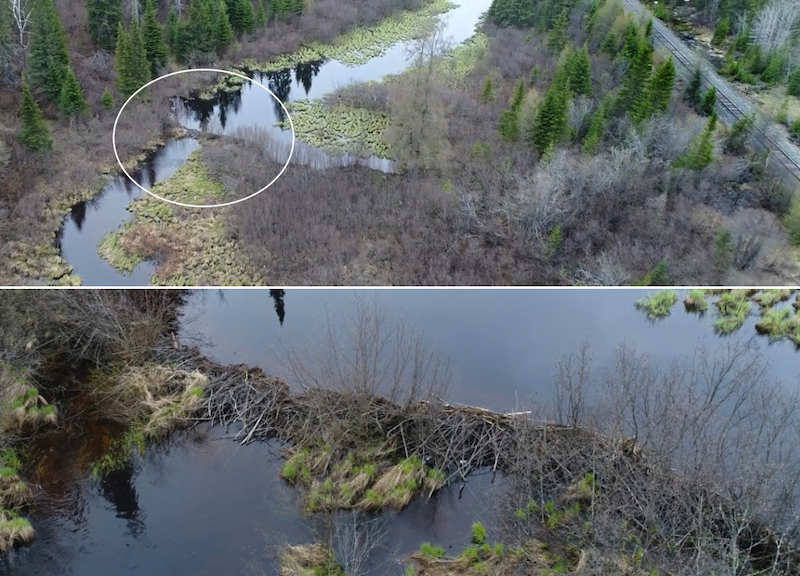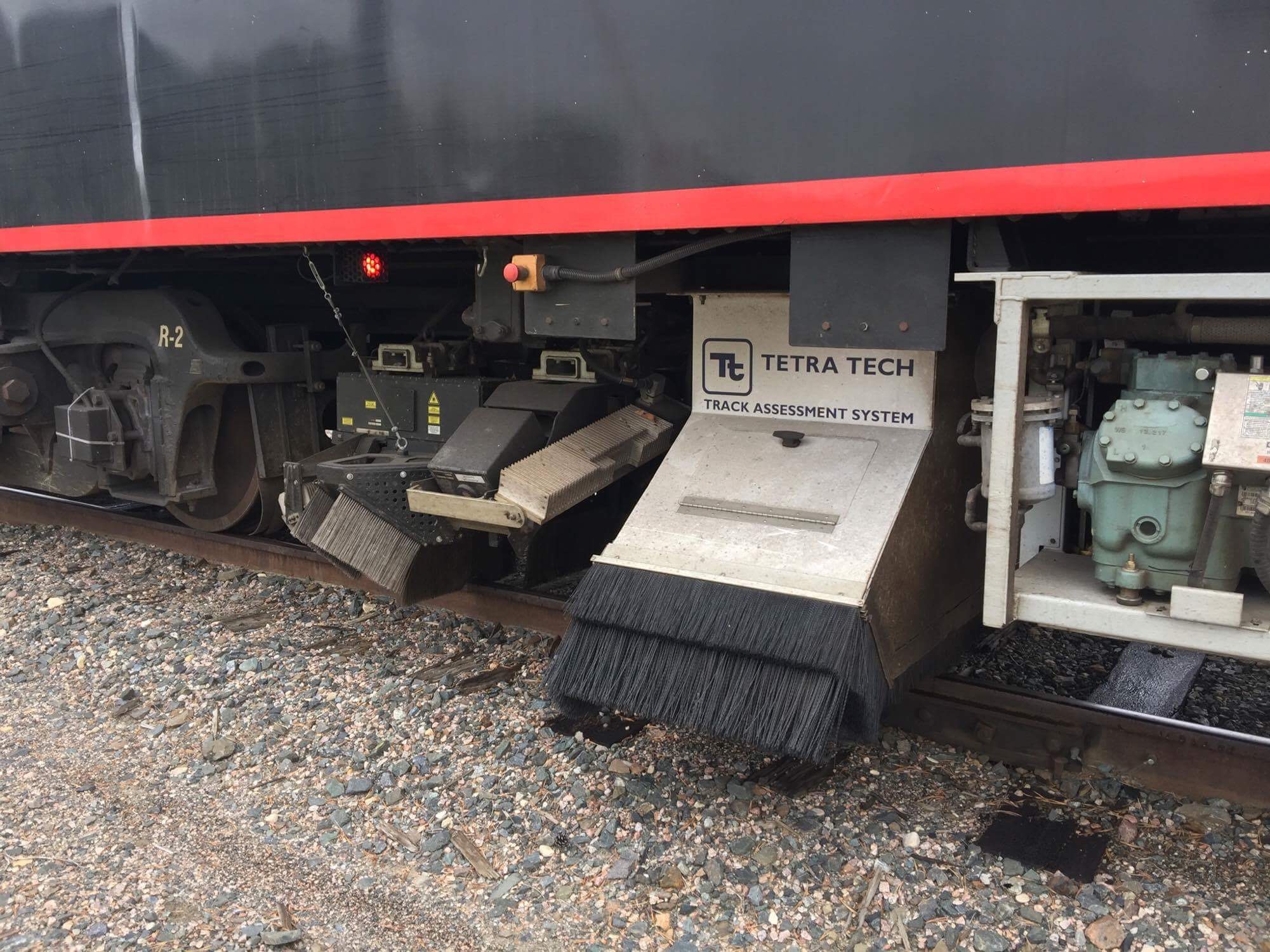Ontario Northland is a crown corporation that provides transportation solutions to Northern Ontario. This vast region of the province is twice the size of the United Kingdom, has a population of over 500,000, and is rich in forestry and mining resources. Many of the towns and cities first developed around the railroad line and still rely on rail today for moving people and goods.
The crown corporation is over 100-years old, and their services touch much of the population of Northern Ontario. Over 300,000 passengers travel each year via motor coach and passenger rail. Ontario Northland also provides rail freight services to key sectors such as forestry, agriculture and mining. They also provide the only all-season land link to Moosonee, ensuring that passengers and essential supplies reach remote First Nations communities in the far north by rail.
Ontario Northland maintains 650 miles of mainline track and their own rail and motor coach equipment. Their repair expertise has been commercialized, and they now provide external repair services to many of North America’s railways.
Essentially, the company is steeped in history and provides diverse transportation services.
With rich history comes tradition, an attachment to the past, and in many cases, resistance to change. The entire North American railway industry is very traditional and, in places and at times, has been slow to embrace modern technology.

Four years ago, Ontario Northland started a corporate transformation program. Many processes at the time were rooted in the past and negatively impacting business by slowing down access to information and delaying decision making. “Data was being inputted manually, and many records were not digitized,” says Chad Evans, Vice President of Corporate Services at Ontario Northland. “We needed to learn more about operations and identify opportunities for technology where integration and digitization could improve monitoring and decision making.”
Over the past few years, Ontario Northland has implemented technology – big and small – in its rail network that is contributing to better risk management. As the VP of Corporate Services with a background in technology and business, Evans was familiar with operational and corporate enterprise risk management best practices. To gain a better understanding of the impact of risk to the railway itself, he threw himself in the front lines, spending hours with track inspectors and taking rail-operating rules training.
What Evans quickly discovered is that not all risk management in rail is technological. As in all industries, many risk management practices rely on a skilled and experienced workforce with good common sense and practical expertise. “Employees who work on the rail system – especially those that have worked for many years – have an impressive skill to detect risk that is not always captured by technology or at first glance.”
Evans travelled with track inspectors and saw that this vital role manages risks every day. “Track inspectors monitor the track to ensure that it is safe for trains to operate. They put into place speed restrictions, request repairs and, when the risk is too great, they can put a section of track out of service until track integrity has been restored,” says Evans.
Evans also observed that track inspectors were dealing with a lot of paperwork. They were travelling hundreds of miles each day, manually writing multipage reports, and submitting them in person to a clerk who had to input the data before it became accessible to the rest of the company. Paperless track inspection technology has since been introduced. The tablet technology is installed in all track inspector high-rail vehicles, allowing them to record track inspections electronically without the need for paper and relay identified defects in real-time through the web-based software. “The efficiency, timeliness, and scalability of inspection data that the new system has provided inspectors is a huge gain which brings multiple data sources to a central location where total track health can be comprehensively evaluated, ultimately to report and fix defects,” says Evans.
The geography and climate of northern Ontario play a large role in risk management for Ontario Northland. Employees of Ontario Northland deal with harsh winters with extreme cold and hot summers with high heat. The terrain is also a challenge; much of the rail line travels through remote areas and there is an abundance of wildlife that lives along the tracks. “In a year, it’s not uncommon for our Beaver Patrol crew to relocate over 200 beavers,” recounts Evans. The unique northern crew consists of two licensed trappers who patrol and monitor the railway for problem areas caused by beaver dams; the crew typically relocates 8-10 beavers in a week. “Although not a traditional risk management practice, it’s an essential one for us to maintain a safe railway.”

As drones become more affordable, they are being used across many industries from agriculture to insurance. The railway is no different. The ability of drones to capture detailed data about infrastructure and monitor potential high water in remote, difficult-to-access areas have had significant benefits to this railway. Previously, the only way to tell if high-water existed was based on the track inspector’s visual inspection from the high-rail vehicle – a truck outfitted for both road and rail. Once the potential threat of high water had been detected, the company would then proceed to charter a helicopter to survey the area in question. Drones have replaced this costly assessment. “The image quality captured by the drone is impressive. Having access to high-definition video taken from a birds-eye view of track conditions has improved our processes and allowed us to quickly identify issues.”
“We now have the ability to make better assessments and plans by using real-time information.” Through recent technological enhancements, Ontario Northland is now in a better position to manage and prevent risks and to react quickly when risk appears. “We’ve moved from a one-dimensional perception of risk management to a multi-faceted approach that is all-encompassing, combining the tried-and-true methods of our skilled track inspectors with new technology to accelerate the safety of our rail system,” says Evans.
Evans will be a guest speaker at the RIMS risk management society ERM Conference this fall in Montreal. He will offer real-life examples of how implementing technology in a 116-year old railway has improved risk outcomes.

